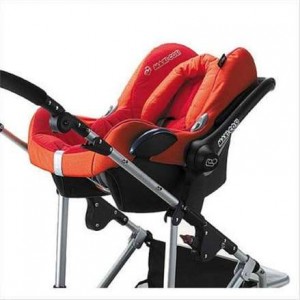 My work is about teaching adults how to achieve better movement patterns and improved posture. There are many reasons for the walking and standing patterns we bring to adulthood but most people don’t make the connection between a new baby’s physical reality and an our adult posture.
My work is about teaching adults how to achieve better movement patterns and improved posture. There are many reasons for the walking and standing patterns we bring to adulthood but most people don’t make the connection between a new baby’s physical reality and an our adult posture.
Bucket babies are a relatively new phenomenon of children the shape of whose heads develop abnormally. As the father of two children and a teacher of movement I have a lot of opinions about babies and the way they are treated/handled in our society. My wife and I are essentially hippies who tried to provide our children with as natural a first year as possible.
What does this mean exactly?
- Breast feeding on demand (I am glad that wasn’t my gig).
- Baby in the bed.
- Baby on the belly.
- Wearing and carrying as much as possible.
- Diaper free (not really but we did start using a potty immediately)
- And a few others that don’t come to mind immediately.
On a certain level all of these things involve sacrifice, especially for a mom who didn’t have a very helpful husband (sorry honey). It means giving up some comfort due to a belief that it will best serve your baby. I would describe it as a simple weighing of scales; in any circumstance is an action better for the baby or better for the parents? We tried to always choose the latter.
The larger world we live in today is not particularly interested in the choices that we made. In many different forums you will hear that a mother should not sacrifice her sleep, her freedom, her career, her soul. And depending on your worldview this point of view might resonate with you; we chose not to think that way (you’ll have to ask my wife how that has worked out for her).
What does all of this have to do with the bucket babies of the title? Bucket babies have made their way into the world for a number of reasons, including issues related to yesterday’s post about tummy time. The ease afforded to parents who want to labor as little as possible when it comes to caring for their baby can have a big impact on their child.
My kids are older now so I have to go back in time a little to describe a typical journey to a store. We’ll use my daughter Ida to play the role of the baby. She is crawling around on the floor as I put my jacket on. Once I am ready I clip on my Ergo baby carrier and pick Ida up and swing her around onto my back to clip her into the Ergo. This requires a bit of work for both of us. We are all set and ready to go.
The walk to the car is short and sweet. Ida is bouncing around on my back trying to look over my shoulder to see what I see. We arrive at the car where I unsnap the Ergo and take Ida off of my back. This is not passive work for her. She provides counter support to the work I do lifting her up. If I swing her around from the back to the front of my body, her neck and spinal muscles are working to stabilize her journey. And then I put Ida into her car seat.
We drive to the store and I take Ida out of her car seat to put her onto my back again to shop. We repeat this two more times before we go home. In and out of the Ergo; in and out of the car seat; in and out of my arms. That is a lot of work for a little baby and not lacking in fun and connection for me.
Now to provide an alternate, all too common scenario: As I put my jacket on, my baby sits patiently in a stroller that doubles as a car seat (or bucket). We head outside where I take the car seat out of the stroller and put it into the car. We arrive at the store and the car seat returns to the stroller for shopping. Mission accomplished, we head back to the car and home transferring the seat from the stroller to the car and back to the stroller again.
Two hours have gone by and the poor baby hasn’t moved a muscle. Our first year of life is the most important year developmentally. Our brains develop in large part due to how we use them and unfortunately they can fail to develop if a child’s environment lacks stimulation and nurturing.
There is no reason why a new Mom wouldn’t make use of her car seat/stroller this way if everyone tells her that it is okay. How do we create a culture that teaches parents otherwise?
***
